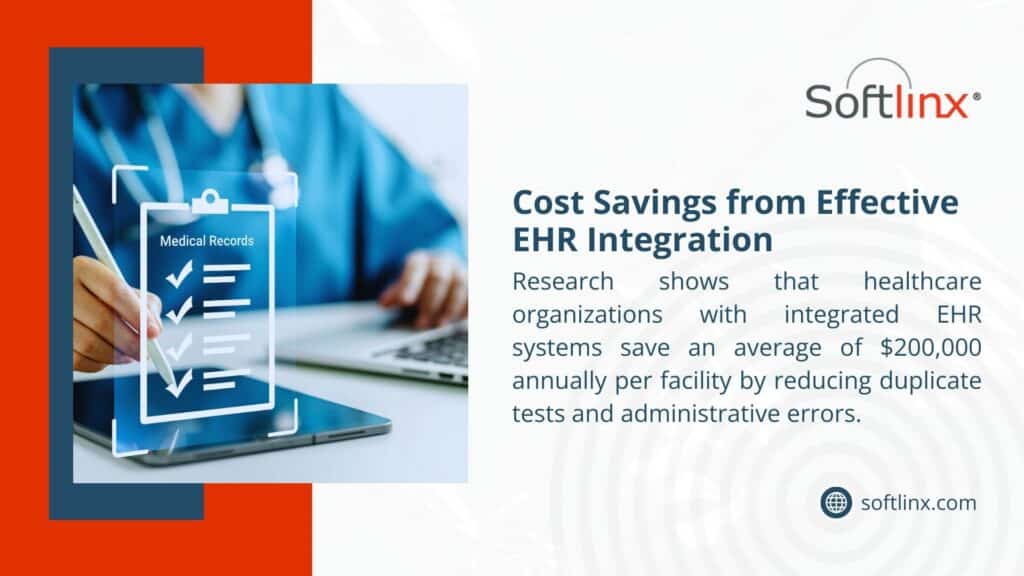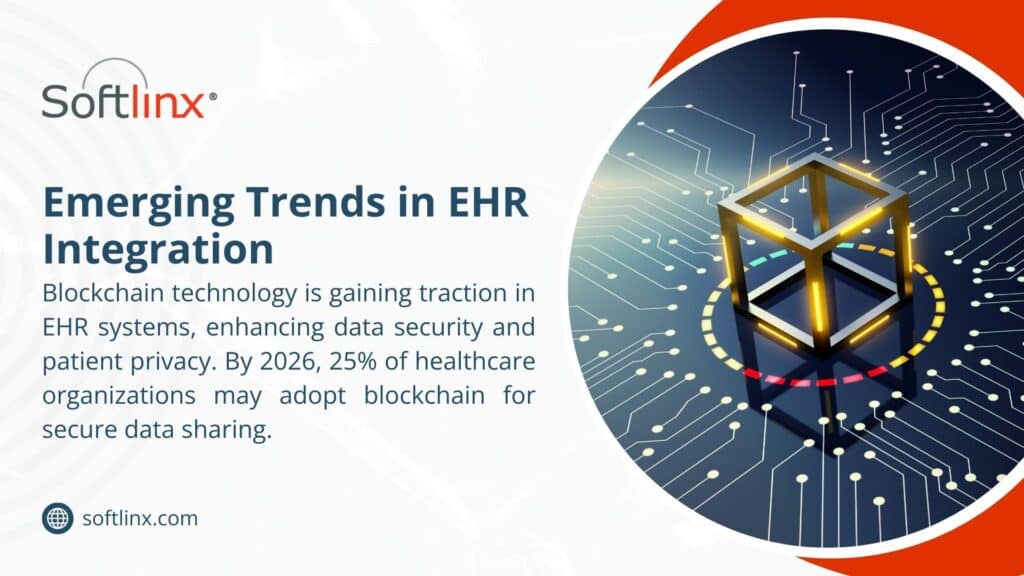Most people don’t realize that EHR integration is not nearly as complicated as vendors make it sound. Sure, there are moving parts, but healthcare organizations that treat it like following a recipe tend to have much better results than those who wing it.
The approach works like cooking a really good meal. The right ingredients are essential, proper prep work makes everything smoother, and following proven steps leads to success. Skip any of these elements, and the whole project can fall apart.
Current statistics tell an interesting story. Nearly every hospital (96% to be exact) has some kind of EHR system now. But only about 30% of them actually have their systems communicating properly with each other.
What You Need to Make EHR Integration Work
Primary Components
FHIR Standards (The Foundation) FHIR might sound like technical jargon, but it’s essentially the universal language that makes different systems communicate. Without FHIR standards, organizations end up with systems that can’t share information effectively. It’s like trying to have a productive conversation where everyone speaks different languages.
APIs (The Connectors) APIs handle the actual data movement between systems. They function like the plumbing in a building – invisible but critical. Quality APIs mean systems share information seamlessly without manual file transfers or outdated processes.
Security Infrastructure (Non-Negotiable) Organizations that try to cut corners on security almost always regret it later. Proper encryption, access controls, and audit trails aren’t optional extras – they’re legal requirements and operational necessities.
Supporting Elements
- Current System Assessment
Before making any changes, healthcare facilities need to understand what they’re working with. Many organizations discover systems during this process that nobody remembered installing or maintaining. Comprehensive mapping prevents unpleasant surprises later.
- Training Programs
Staff will resist new systems if they don’t receive proper training. Effective training means comprehensive instruction, not just brief overviews followed by unrealistic expectations.
- Compliance Framework
HIPAA and other regulations aren’t going anywhere. Smart organizations build compliance into their integration recipe from day one rather than treating it as an afterthought.
Preparation Steps for the Integration
To prepare for the integrations, you need to do the following:

Step 1: Complete System Inventory
Healthcare facilities should document every single system currently in use. This process often reveals surprising discoveries – like multiple software licenses for unused applications or forgotten databases that still contain important information.
Step 2: Data Flow Mapping
Organizations need to understand how information moves between systems. Where does patient data originate? Where does it need to go? What transformations happen along the way? Clear mapping prevents major problems during implementation.
Step 3: Standardization Planning
Picking data formats and sticking to them consistently across departments is crucial. When different areas use incompatible formats, integration becomes exponentially more difficult.
Step 4: Security Architecture
Security can’t be added as an afterthought. Organizations need to determine access requirements, data protection methods, and monitoring procedures before implementation begins.
Implementation Process
Phase 1: Pilot Testing (Start Small)
Successful organizations don’t try to integrate everything simultaneously. Starting with one small area – maybe lab results or appointment scheduling – allows teams to perfect the process before expanding.
Healthcare facilities that attempt everything at once often create complicated messes that take months to resolve. Starting small, proving the concept works, then scaling up produces much better results.
Phase 2: Gradual Expansion (Building the System)
Once the pilot runs smoothly, organizations can add more components gradually. Maybe radiology next, then pharmacy, then billing systems. Each addition should build on proven, working foundations.
Staff feedback during this phase provides valuable insights since they’re the ones using these systems daily.
Phase 3: Full Deployment (Going Live)
Organizations can now deploy across their entire operation. However, simply flipping switches and walking away isn’t wise. Close monitoring during the first few weeks allows for quick adjustments when needed.
Professional Tips From Successful Implementations
Managing Data Flow
Systems need to handle peak loads without failing. Healthcare facilities often discover that integrations working fine during normal periods struggle during busy seasons when patient volumes spike significantly.
Real-time decision support has become standard practice. Approximately 80% of healthcare providers now use EHR-based decision support tools for diagnoses and treatment planning. Integrations must handle these real-time demands reliably.
Strategic Timing
Major system changes during peak operational periods rarely go well. Healthcare facilities that schedule rollouts during slower periods can focus on making things work properly rather than managing crises.
Quality Assurance
Setting up checkpoints throughout implementation catches problems early. Testing patient matching accuracy, data integrity, and system performance during development costs far less than fixing issues after going live.
Healthcare-Specific Considerations
External Communication Needs
EHR integration represents just one piece of the communication puzzle. Healthcare facilities still need reliable methods for communicating with external partners, insurance companies, and regulatory agencies.
Many healthcare organizations continue using fax through the internet for secure document transmission. While it might seem outdated, this approach works reliably and meets compliance requirements.
Compliance Requirements
Understanding HIPAA fax requirements becomes important when fax communication forms part of the overall strategy. The question is fax HIPAA compliant frequently arises, and the answer depends entirely on implementation methods.
Infrastructure Decisions
Some organizations require hybrid approaches – cloud-based EHR systems combined with on-premise communication tools like a fax server for specific workflows. No universal solution works for every situation.
Investment Analysis
| Component | Initial Investment | Annual Savings | Break-Even Timeline |
| FHIR Implementation | $150K – $500K | $200K – $800K | 12-18 months |
| API Development | $100K – $300K | $150K – $600K | 18-24 months |
| Security Infrastructure | $75K – $200K | $100K – $400K | 24-36 months |
| Staff Training | $50K – $150K | $75K – $300K | 6-12 months |
Healthcare organizations that implement comprehensive integration strategies typically see revenue increases around 25% because they can identify and address care gaps and revenue opportunities that were previously invisible.

Advanced Capabilities
AI Integration
Artificial intelligence in EHR systems can automate routine tasks, analyze patient data patterns, and support clinical decision-making. However, organizations should establish solid basic integration before pursuing advanced AI features.
Predictive Analytics
Some EHR-integrated AI systems achieve 95% accuracy in predicting patient disease progression, enabling proactive interventions. These capabilities only function effectively when the underlying data integration maintains high-quality standards.
Real-Time Monitoring
Comprehensive monitoring dashboards provide immediate visibility into system performance and clinical metrics. Like having command centers in critical operations, these dashboards ensure everything runs smoothly during peak activity.
Maximizing Integration Value
Workflow Enhancement
Integrated workflows should make clinical work easier rather than more complicated. When systems communicate properly, healthcare providers can make better decisions because they have access to complete, current patient information.
Patient Engagement
Modern patients expect greater control over their healthcare experiences. Effective EHR integration should provide patients with better access to their medical records, personalized health insights, and tools for proactive self-care management.
Performance Tracking
Organizations should establish metrics for measuring integration success across clinical outcomes, operational efficiency, and financial performance. Continuous refinement based on actual data produces ongoing improvements.
Troubleshooting Common Problems
Data Synchronization Issues
Systems occasionally fall out of sync despite careful planning. Automated monitoring and reconciliation processes help identify and resolve these problems quickly before they impact patient care.
User Adoption Challenges
Even excellent integrations fail when staff won’t use them properly. Addressing resistance through comprehensive training and genuine attention to user feedback prevents adoption problems.
Performance Bottlenecks
Continuous system performance monitoring helps identify bottlenecks before they affect patient care delivery. Preventing problems costs much less than fixing them after they impact operations.
Long-Term Maintenance
Regular Updates
Scheduled maintenance windows for updates and security patches keep systems running optimally. EHR integration requires the same regular attention as any other critical infrastructure.
Backup and Recovery
Comprehensive backup and disaster recovery procedures protect against data loss and system failures. The potential $30 billion in annual healthcare savings from improved interoperability depends on systems that stay operational.
Continuous Improvement
Feedback loops with clinical staff and IT teams ensure integration continues improving based on real-world experience. The best implementations evolve constantly based on user needs and technological advances.

Getting EHR Integration Done Without the Headaches
EHR integration doesn’t have to become the overwhelming project that derails other priorities. Following proven recipes and taking systematic approaches leads to successful outcomes.
Healthcare organizations need communication solutions that extend beyond internal systems. Reliable external communication with partners, regulatory agencies, and other stakeholders requires proven, compliant technologies.
Softlinx understands that comprehensive healthcare communication strategies require more than just internal system integration. Cloud-based solutions that work seamlessly with modern EHR environments provide the secure, compliant connectivity that integrated healthcare operations demand.
Fore More:
